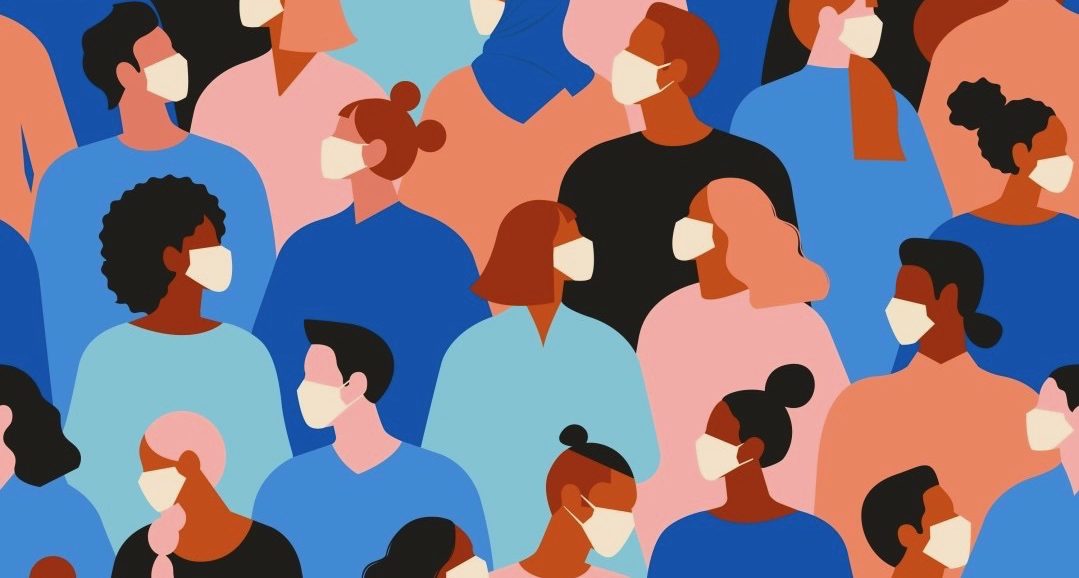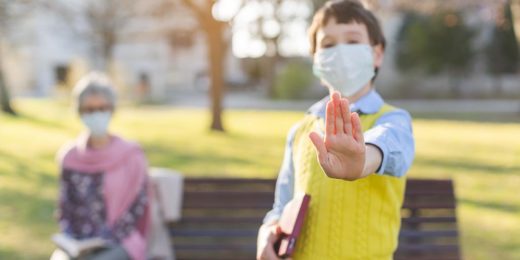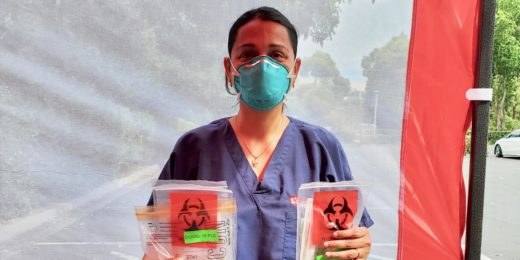While there are still many unknowns about COVID-19, there is one thing I know for certain: we are all eager to restore a sense of normalcy to our lives. But we cannot afford to do so hastily. COVID-19 cases are on the rise again, reminding us that returning too quickly to pre-COVID norms risks undoing months of effort to drive down infections and limit hospital-bound cases.
The unfortunate reality is that until an effective vaccine is widely available, COVID-19 will persist in our day-to-day lives. While researchers are working around the clock to create such a vaccine, I must caution those hoping for one by this winter or sooner.
With COVID-19 still a present threat to our communities, "reopening" must be done with thoughtful planning and a robust system of people, processes, and technologies in place. In this article, I describe five elements that will be necessary for communities to safely reopen -- and remain open -- in the months ahead:
- Widespread diagnostic and antibody testing
- Equitable care for all communities
- Digital symptom tracking and contact tracing
- Effective treatments
- Virtual health care
Widespread diagnostic and antibody testing
Widespread diagnostic testing is one of the most important first steps, if not the most important, in helping our communities emerge from sheltering in place. Over the past several months, we have made significant progress in expanding testing access to patients. At Stanford, for example, we were proud to be among the first to develop and deploy an in-house diagnostic test for COVID-19, which helped boost our region's testing capacity in the early days of the crisis. Since then, others have brought large-scale testing online, but nationally, there is still much more work ahead.
To date, the United States has conducted roughly 25 million tests. While that may sound like a lot, it is a far cry from the 12-15 million tests per month that experts say are needed to maintain an accurate picture of COVID-19 infections.
The second pillar of COVID-19 testing is called serologic or antibody testing. This test detects specific blood-based antibodies that signal whether a person has or has had COVID-19, and it is a crucial element in recovery and reopening for several reasons:
- Antibody testing helps piece together a complete picture of viral prevalence and spread in our communities.
- A nontrivial number of COVID-19 cases are mildly symptomatic or asymptomatic, meaning that patients may not know they are ill, or may not know COVID-19 caused their illness. Being able to distinguish COVID-19 is especially important as we enter the next cold and flu season.
- By following individuals who test positive for antibodies, we can begin to learn whether having antibodies confers protection from subsequent infections over time.
There is potential for antibody testing to help guide our country's reopening, but there are still open questions. For instance, if someone tests positive for antibodies, does that signal immunity, and to what degree? Researchers are still not entirely sure -- it could mean the person is temporarily immune; or it could mean that the person will not develop symptoms, but could still transmit the virus, among other possibilities.
Over nine months, with support from the Chan Zuckerberg Biohub, Stanford Medicine scientists will work in concert with the UCSF, to fill in some of those blanks.
Equitable care for all communities
In recent weeks, the Black Lives Matter movement has brought much-needed attention to the systems of oppression and racism that remain deeply rooted in our country. These longstanding inequities have real, documented effects on the health of communities of color, and what we see with COVID-19 is no different.
Tragically, the first wave of COVID-19 has shown, yet again, that our ZIP code is the single greatest predictor of our health. COVID-19 deaths are occurring at a much higher rate in Black, Hispanic and Latinx communities. Black Americans, in particular, are dying of COVID-19 at 2.4 times the rate of White Americans.
As communities begin to reopen, their recovery plans must give special attention to addressing barriers that have fueled massive health disparities in historically marginalized neighborhoods. While it is far from a complete solution, better reporting on COVID-19 outcomes is crucial. In the early days of the pandemic, racial demographics were not broadly shared as part of COVID-19 reporting on new cases and deaths. As a result, communities were essentially blind to the fact that minority groups were hit hardest by the virus, and interventions suffered as a result.
Work to close these kinds of gaps must continue and expand far beyond the pandemic. At Stanford Medicine, through initiatives such as the Stanford Precision Health for Ethnic and Racial Equity center, we are committed to addressing health inequities across research, teaching and patient care.
Digital symptom tracking and contact tracing
As shelter in place orders continue to relax, we can expect to see regional spikes in new cases. To help anticipate these outbreaks before they start, digital symptom trackers, such as the one developed at Stanford Medicine, can help people self-report COVID-19-like symptoms daily. From this wealth of data, these trackers can act as an early warning system for future outbreaks of the virus -- helping to catch and contain cases before they reach the hospital.
We can further protect our communities by thoroughly investigating COVID-19 cases and alerting those who have come into contact with a person either suspected or confirmed to have the virus. This practice, known as contact tracing, has a long history in public health and has proven critical in confronting past epidemics. Unfortunately, the current number of contact tracers in the United States is a fraction of what is needed.
Addressing this gap will require a massive workforce mobilization effort, likely on par with programs during the New Deal-era. Part of the solution will come from the public-private partnerships that have emerged to offer free online training to public health workers. In the near-term, technology can also help. Google and Apple, for example, are collaborating with public health officials to support virtual contact tracing through apps and Bluetooth technology.
Regardless of the approach, a common challenge for contact tracing will be earning public trust. Effective tracing depends on participation, and that will only happen when people feel assured that their data is in good hands and that they have control over how their information is used.
Effective treatments
Until we have a vaccine, finding effective treatments for COVID-19 will be essential to reducing the effects of the virus on individuals. On this front, we have made remarkable progress in a relatively short period. Although sure-fire treatments for COVID-19 do not exist, clinical trials -- including some conducted at Stanford Medicine -- have shown that the antiviral drug remdesivir helps hospitalized patients recover faster than those who are not treated. Based on these studies' positive results, in early May, the U.S. Food and Drug Administration issued an emergency use authorization for remdesivir for treating hospitalized patients with COVID-19.
Looking ahead, we will need treatments that not only expedite recovery but also decrease mortality. We will also need to find new drugs that enable us to treat patients at home, which do not currently exist. To that end, clinician-scientists at Stanford Medicine are investigating outpatient therapies, including the therapeutic agent Lambda, an antiviral compound that's been used in clinical trials of hepatitis viruses.
Virtual care
Over just a few weeks, virtual patient visits at Stanford Medicine soared from roughly 2% to over 70%. This shift is an example of the type of resilient, flexible health care system our society will need as we continue to navigate the ebbs and flows of COVID-19 in the coming months.
We should expect that future waves of the virus will occur; but as I mentioned in part one of this series, that shouldn't come at the cost of essential care. Providing health care does not always require an in-person office visit -- something we are quickly learning in this crisis.
We must embrace digital care as part of the new normal and continue to explore how technology can be used in the home to bring doctors and patients closer together. Equally important, reimbursement for digitally-driven models of care must keep pace. Across the country, health care organizations are already starting to make that shift.
Life after shelter in place
In the early days of my medical career, HIV/AIDS was our greatest public health threat, with a 100%t mortality rate. That's not the case today. Thirty years of research has ultimately turned what was once a death sentence into a manageable chronic condition. I see many parallels between the path to treatment and recovery then and now.
Just as AZT was the first drug to show potential in treating HIV, remdesivir is the first drug to establish that COVID-19 is treatable. It is a starting point that we are rapidly building and iterating on to produce therapies that will improve the prognosis for COVID-19 patients.
Now, just as then, we are witnessing a renaissance in immunology and viral biology. Practically overnight, investments in fundamental discovery and translational research in these areas have skyrocketed. Moreover, we have the advantage of building on decades of foundational scientific knowledge established by scientists, who for years, worked to answer important questions about HIV/AIDS and the human immune system.
I am also reminded of the critical role of public health in educating the public about HIV/AIDS, fighting stigma,and promoting behaviors that prevent infection. Today, public health is just as important as ever, as we learn to coexist with COVID-19. Together, we can take collective actions such as wearing masks, physical distancing and handwashing to mitigate the risks until a vaccine is available.
One crucial difference between the HIV/AIDS pandemic and COVID-19 is that I do not believe we will have to wait 30 years to achieve the same level of progress. Never in my career have I witnessed the level of collaboration that we see today. As I write, more than 100 vaccine candidates for COVID-19 are being investigated by researchers around the globe. Longstanding business competitors in pharma have pledged to share resources and clinical trial data with governments and each other to accelerate new therapies. And new collaborations and partnerships are emerging every day that cut across sectors.
Though there are many challenges ahead of us, the cooperative spirit that has unfolded in response to COVID-19 gives me optimism that there will be a better future after sheltering in place -- one that we can look forward to.
In Part I of this series, I discussed the importance of safely re-engaging patients in preventive care.
Lloyd Minor, MD, is dean of the Stanford School of Medicine and a professor of otolaryngology-head and neck surgery. This piece originally appeared on his LinkedIn page.
Image by Angelina Bambina






